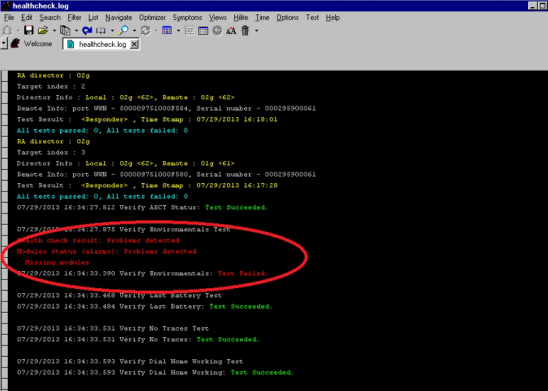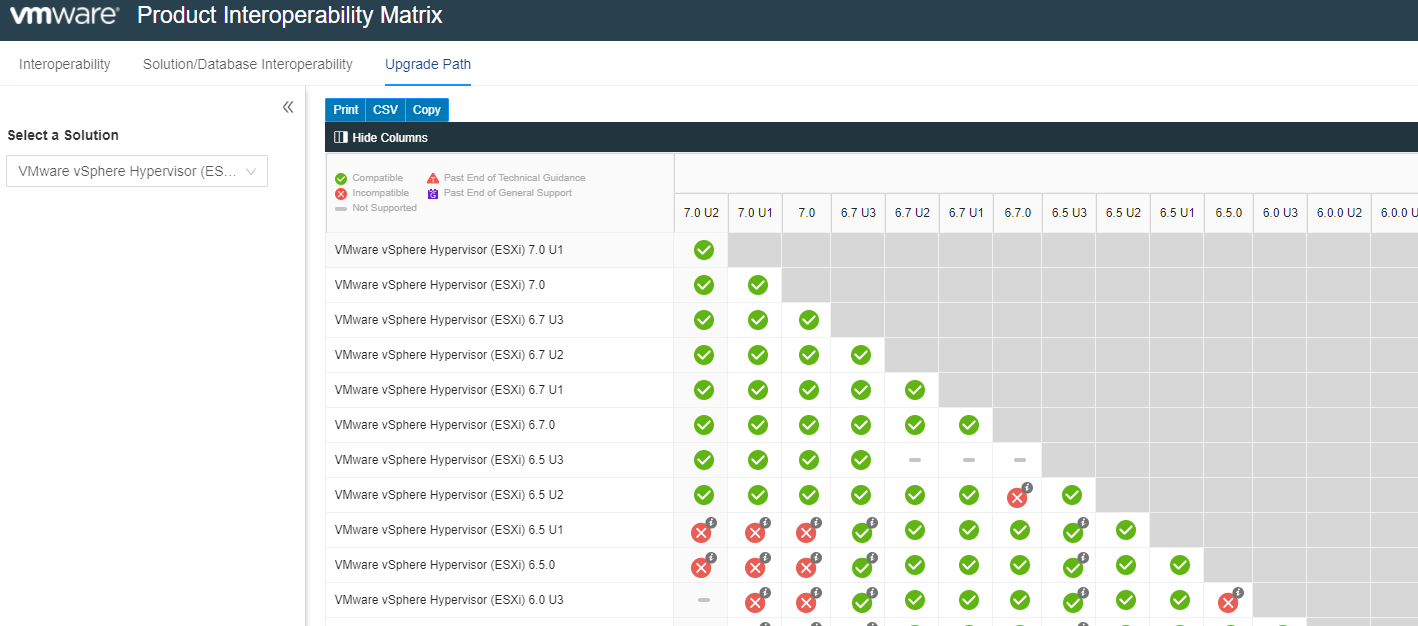

- #EMC SUPPORT MATRIX INTEROPERABILITY RESULTS HOW TO#
- #EMC SUPPORT MATRIX INTEROPERABILITY RESULTS SOFTWARE#
Where the VMware Product Interoperability Matrices and the VMware Compatibility Guide do not provide information relating to Site Recovery Manager, this information is listed here.
#EMC SUPPORT MATRIX INTEROPERABILITY RESULTS HOW TO#
Where compatibility information for Site Recovery Manager exists in the VMware Product Interoperability Matrices and the VMware Compatibility Guide, the present matrices describe how to use these tools to find the relevant information.

Note: In general, switch port congestion and/or packet drops on a switch is not the result of a problematic storage system, but rather a non-optimal switch that is unable to process data packets fast enough in a storage network environment.The Compatibility Matrices for VMware Site Recovery Manager 8.6 describe the compatibility between Site Recovery Manager 8.6 and platforms, database software, guest operating systems, storage partners, and other VMware solutions. If switch port packets drops are excessive during iSCSI/LAN traffic, then it is recommended that you contact your switch vendor to seek a resolution to improve buffer management. packet drops, throttles) for congestion and packet drops. In larger network deployments, a switch with a larger shared packet buffer size and/or the use of flow control may be required.Ī data center administrator should always monitor the switch port metrics (i.e. Each data center has different network requirements, thus, may or may not require the recommended shared packet buffer sizes or flow control. In a network environment where switch ports are congested, this can cause switch port packet drops, thus leading to edge device data retransmission and elevated latency. This includes, but not limited to, the number of edge devices, MTU size, I/O transfer size, link speed (10Gbps, 25Gbps), over-subscription, and switch utilization. Packet buffer utilization and the use of IEEE 802.3x flow control on a switch is highly dependent on the network environment. An RPQ should still be submitted for switches that do not meet the recommended characteristics.įor an ethernet switch to efficiently process data packets to/from all edge devices, there must be a sufficient amount of shared packet buffer built into the switch. PowerStoreOS v2.0 or newer supports SDN and ACI mode interoperability. However, if the PowerStore storage array is running PowerStoreOS v2.0 or newer, then an RPQ is not required for SDN or ACI mode interoperability. Submitting an RPQ for SDN or ACI Mode switches is mandatory regardless of if the switch already meets the recommended characteristics.
#EMC SUPPORT MATRIX INTEROPERABILITY RESULTS SOFTWARE#
In addition, an RPQ must be submitted for any switch model that implements Software Defined Networks (SDN). One example of an SDN capable switch, but not limited to, is the Juniper QFX series. Note: If the PowerStore storage array is running version PowerStoreOS v1.x, it is mandatory to submit an RPQ for any customer that enables Cisco ACI mode. 8K, 32K, 64K), number of hosts connecting to PowerStore, MTU size and port speeds (10/25Gbps) that will be configured with PowerStore.Īn RPQ should be submitted for all 1Gbps switches. If the ethernet switch does not support the recommended characteristics, an RPQ should be submitted for further review and should include information such as Switch datasheet, average network I/O block size (i.e. If the ethernet switch supports the recommended characteristics listed in this document, then an RPQ does not need to be submitted. Review your switch User’s Guide.įor network switch optimization, although not mandatory, it is highly recommended that the switch support a “non-blocking” architecture. It is recommended that PortFast mode (immediate forwarding state) and Storm-Control (e.g. Minimum of 32MB of shared packet buffer for 25Gbps switches Minimum of 9MB of shared packet buffer for 10Gbps switches The recommended switch characteristics for interoperability with PowerStore iSCSI/NAS/ethernet/inter-cluster communications are, but are not limited to: This document does notĪpply to Fibre Channel and does not apply to switches tasked to manage PowerStore. Refer to the E-Lab Navigator website:ĭetails on whether an RPQ is required for ethernet switch interoperability with the PowerStore storage array for iSCSI/NAS/ethernet/inter-cluster communication. This document does not apply to Fibre Channel and does not apply to switches tasked to manage PowerStore.įor an official listing of all switches that are supported with PowerStore. PowerStore: Ethernet Switch Compatibility with Dell EMC PowerStore Details on whether an RPQ is required for ethernet switch interoperability with the PowerStore storage array for iSCSI/NAS/ethernet/inter-cluster communication.


 0 kommentar(er)
0 kommentar(er)
